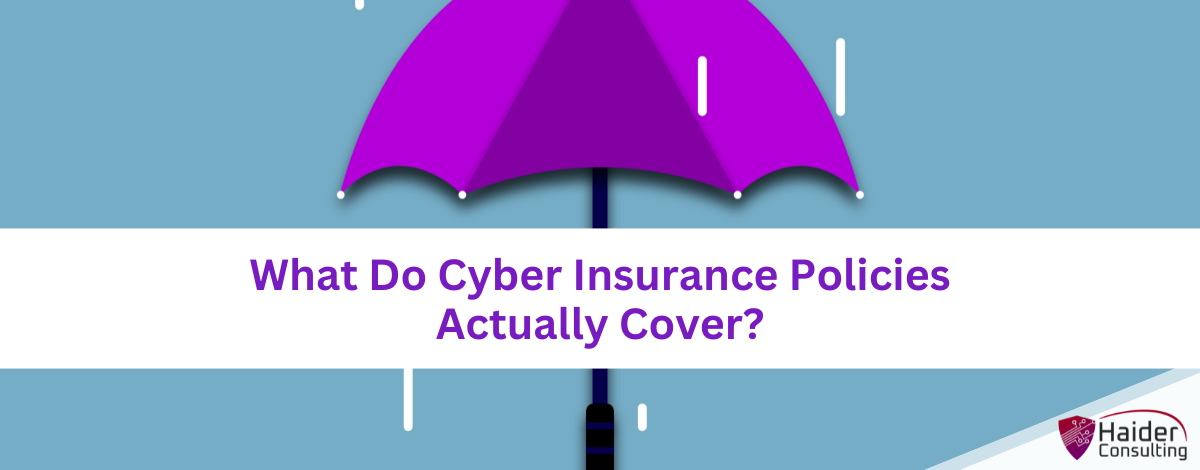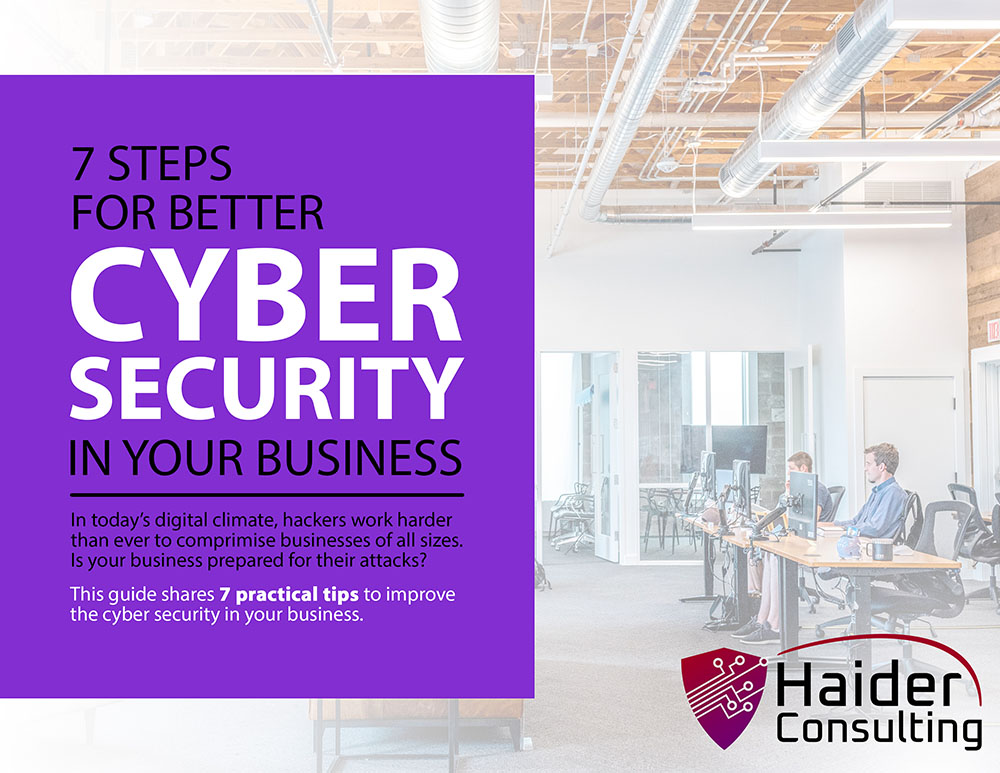For small businesses navigating an increasingly digital world, cyber threats aren’t just an abstract worry, they’re a daily reality. Whether it’s phishing scams, ransomware attacks, or accidental data leaks, the financial and reputational damage can be severe. That’s why more companies are turning to cyber insurance to mitigate the risks.
Not all cyber insurance policies are created equal. Many business owners believe they’re covered, only to find out (too late) that their policy has major gaps. In this blog post, we will break down exactly what’s usually covered, what’s not, and how to choose the right cyber insurance policy for your business.
Why Is Cyber Insurance More Important Than Ever?
You don’t have to be a big company to be a target for hackers. In fact, small businesses are now more at risk than ever. According to the 2023 IBM Cost of a Data Breach Report, 43% of all cyberattacks hit small to mid-sized businesses. For these companies, the average cost of a breach is $2.98 million—a huge hit for any growing business.
At the same time, customers expect their data to be protected, and regulators are tightening rules around privacy. A strong cyber insurance policy not only helps cover the costs after a cyberattack but also helps your business stay compliant with laws like GDPR, CCPA, or HIPAA. That makes it a valuable tool for both protection and peace of mind.
What Cyber Insurance Usually Covers
A good cyber insurance policy can help protect your business from the financial impact of a cyberattack. It generally includes two main types of protection: first-party coverage and third-party liability coverage. Each type covers different risks, depending on your business needs and the kind of cyber incident you face. Below is a breakdown of each type and what they usually include.
First-Party Coverage
First-party coverage helps your business directly when you’re hit with a cyberattack or data breach. It covers the immediate costs to get back on your feet after an incident.
Breach Response Costs
One key area covered under first-party insurance is breach response. After an attack, you may need to:
• Investigate what happened and what data was affected
• Get legal advice to make sure you’re following privacy laws
• Notify any customers whose information was compromised
• Offer credit monitoring to those affected if sensitive data was stolen
Business Being Interrupted
Cyberattacks that shut down your systems or stop your operations can cause serious financial losses. Business interruption coverage helps by covering lost income during these outages. This allows you to focus on getting back to normal without worrying about cash flow.
Ransomware and Cyber Extortion
Ransomware is becoming more common and can freeze your business by locking important files. Cyber extortion coverage helps you deal with these threats by covering:
- Ransom payments made to cybercriminals.
- The cost of hiring experts to negotiate and recover your data.
- Expenses related to unlocking files that were encrypted during the attack.
Restoring Data After an Attack
Big cyberattacks can damage or delete important business data. Data restoration coverage helps you recover that data using backups or professional recovery services. This reduces downtime and keeps your business running.
Reputation Management
After a cyberattack, it’s important to regain the trust of your customers, partners, and investors. Many cyber insurance policies now include reputation management as part of their coverage. This typically covers:
- Hiring public relations (PR) firms to handle crisis communications, write official statements, and reduce harm to your business’s public image.
- Getting expert advice on how to clearly and honestly communicate with affected customers and stakeholders.
Third-Party Liability Coverage
Third-party liability coverage helps protect your business when people outside your company—like customers, vendors, or partners—are affected by a cyberattack. If a breach causes harm to others, this coverage helps cover your legal and financial responsibilities.
Privacy Liability
This protects your business if private customer data is lost, stolen, or exposed during a cyber event. It typically covers:
- Legal costs if you’re sued for failing to protect personal information.
- Payments if a third party suffers losses because of your data breach.
Regulatory Defense
Cyberattacks can lead to investigations or penalties from regulatory agencies like the FTC or other industry regulators. Regulatory defense coverage can help by:
- Covering fines or penalties if you’re found to have violated data protection laws.
- Paying for the legal costs to defend your business during a regulatory investigation.
Media Liability
If your business is hit by a cyberattack that results in issues like online defamation, copyright problems, or the leak of confidential content (like trade secrets), media liability coverage can help. It typically includes:
- Defamation Claims – If false or damaging statements are made public due to a breach, this coverage helps pay legal fees to defend your business.
- Infringement Cases – If a hacker exposes copyrighted content or causes intellectual property violations, this coverage helps cover the cost of responding to those claims.
Defense and Settlement Costs
If your business is sued after a cyberattack or data breach, third-party liability coverage helps with the legal costs. This includes:
- Covering attorney fees to defend your business in court.
- Paying settlements or judgments if your company is held responsible.
Optional Riders and Custom Coverage
Cyber insurance policies often give businesses the option to add extra coverage, known as riders. These additions help customize protection to fit specific risks your business may face.
Social Engineering Fraud
This is one of the most common cyber threats today. It involves scams like phishing emails or fake phone calls meant to trick employees into revealing sensitive info, sending money, or giving system access. This coverage helps with:
- Losses from employees being tricked by phishing or fake requests.
- Losses from unauthorized fund transfers caused by scammers.
Hardware “Bricking”
In some cyberattacks, devices are damaged so badly they stop working—this is called “bricking.” This rider helps cover the cost to replace or repair equipment that’s been permanently disabled by a cyberattack.
Technology Errors and Omissions (E&O)
This coverage is especially helpful for tech companies, like IT consultants or software developers. It protects you if a mistake in your service or software causes damage and someone files a claim against your business.
What Cyber Insurance Often Doesn’t Cover
Knowing what your cyber insurance doesn’t include is just as important as knowing what it does. Many small business owners overlook these exclusions, which can leave them unprotected when it matters most.
Negligence and Poor Cyber Hygiene
Most policies have strict rules about your business’s security practices. If you don’t follow basic cybersecurity steps—like setting up firewalls, using Multi-Factor Authentication (MFA), or keeping software updated—your insurance company might reject your claim.
Pro Tip: Many insurers now ask for proof that you’re following good cyber hygiene. This can include employee training, regular security checks, and using up-to-date protection tools.
Known or Ongoing Incidents
Cyber insurance won’t pay for attacks or breaches that started before your policy went into effect. If you were already experiencing a problem or were aware of a security weakness and didn’t fix it, your claim may be denied.
Pro Tip: Before getting coverage, make sure your systems are secure and fix any known issues. This helps avoid problems with your claim later.
Acts of War or State-Sponsored Attacks
After major attacks like the NotPetya ransomware incident, many insurers now include a “war exclusion” in their policies. This means if a cyberattack is linked to a foreign government or a state-backed group, your policy might not cover the damage. These are often treated as acts of war, which fall outside standard cyber insurance coverage.
Pro Tip: Always review your policy for any exclusions related to nation-state attacks so you’re not caught off guard.
Insider Threats
Most cyber insurance policies don’t cover damage caused by your own employees or contractors—unless you’ve added special coverage for insider threats. This is important because internal attacks can be just as damaging as external ones.
Pro Tip: If you’re worried about insider risks, talk to your insurance provider about adding coverage for intentional harm caused from within your company.
Reputational Harm or Future Lost Business
While some policies include help with public relations after an attack, they usually don’t cover the long-term damage to your brand or future loss of income. Losing customers or sales due to trust issues isn’t typically included in standard coverage.
Pro Tip: If your business depends heavily on your reputation, consider adding extra protection or investing in professional crisis management services. The effects of reputational damage can last long after the breach itself.
How to Choose the Right Cyber Insurance Policy
Assess Your Business Risk
Begin by understanding where your business is most vulnerable:
- What kind of data do you collect? Customer info, financial records, or health details may all require different levels of protection.
- How much do you rely on technology? If your operations depend on digital tools or cloud services, you’ll likely need stronger protection in case of system downtime or cyberattacks.
- Do outside vendors connect to your systems? Third-party providers can create weak spots in your defenses. Make sure your policy covers incidents caused by vendors.
These questions will help you see what areas need the most security coverage.
Ask the Right Questions
Before agreeing to a policy, be sure to ask:
- Does this policy cover ransomware and social engineering scams? These attacks are becoming more common, and many standard policies don’t automatically include them.
- Are legal costs and fines included? If you get sued or fined after a data breach, you’ll want a policy that helps pay for these expensive outcomes.
- What’s not covered—and when? Always read the fine print so you know exactly what your insurer will and won’t pay for if something happens.
Get a Second Opinion
You don’t have to figure this out alone. A cybersecurity expert or insurance broker who understands both the tech and legal sides of cyber risk can help. They’ll walk you through complex policy details, point out any gaps in coverage, and make sure you’re properly protected. Having a pro on your team helps you make smarter, safer decisions for your business.
Consider the Coverage Limits and Deductibles
Cyber insurance policies include limits on how much they’ll pay and how much you must pay first. Make sure your policy limit matches the size of your risk. If a breach could cost your business millions, your coverage should reflect that. Also, take note of the deductible—the amount you’ll need to pay out-of-pocket before insurance starts covering costs. Choose one your business can realistically afford if an incident happens.
Review Policy Renewal Terms and Adjustments
Cyber threats change quickly. A policy that works today might not cover tomorrow’s risks. Check how often your insurer reviews and updates your coverage. Can you adjust your limits and terms as your business grows or as threats evolve? Make sure your policy can keep up with your needs and stay effective as the cyber landscape changes.
Cyber insurance is a smart move for small businesses—but only if you understand what you’re getting. Knowing what’s covered (and what’s not) can be the difference between recovering quickly and facing a major setback.
Take time to understand your risks, ask the right questions, and read the fine print. Pair your insurance with strong cybersecurity practices like MFA and risk assessments, and you’ll be much better prepared for whatever threats come your way.
Need help reviewing your policy or improving your security setup? Reach out to us today and take your first step toward better protection.
Book My 17-Minute Call





